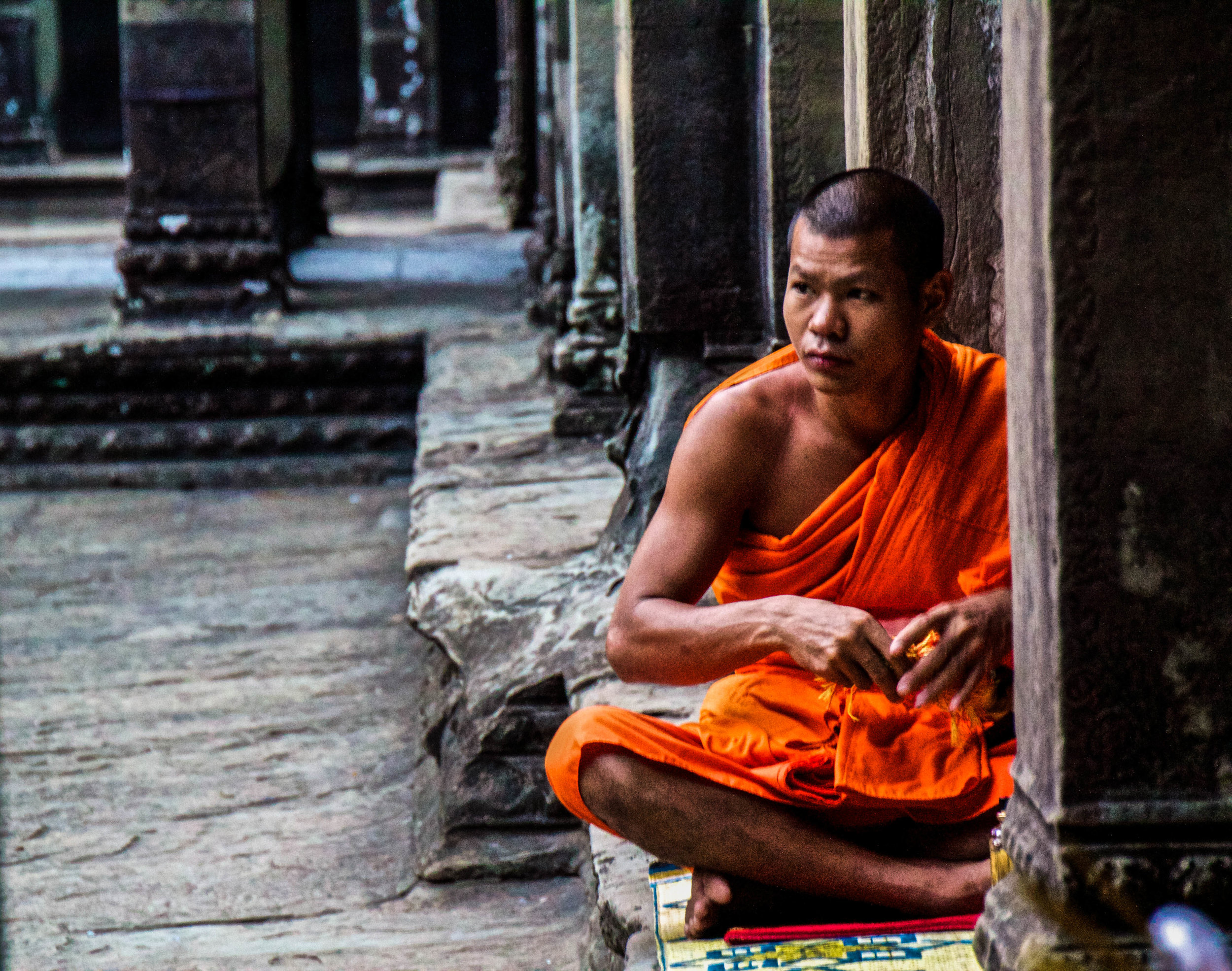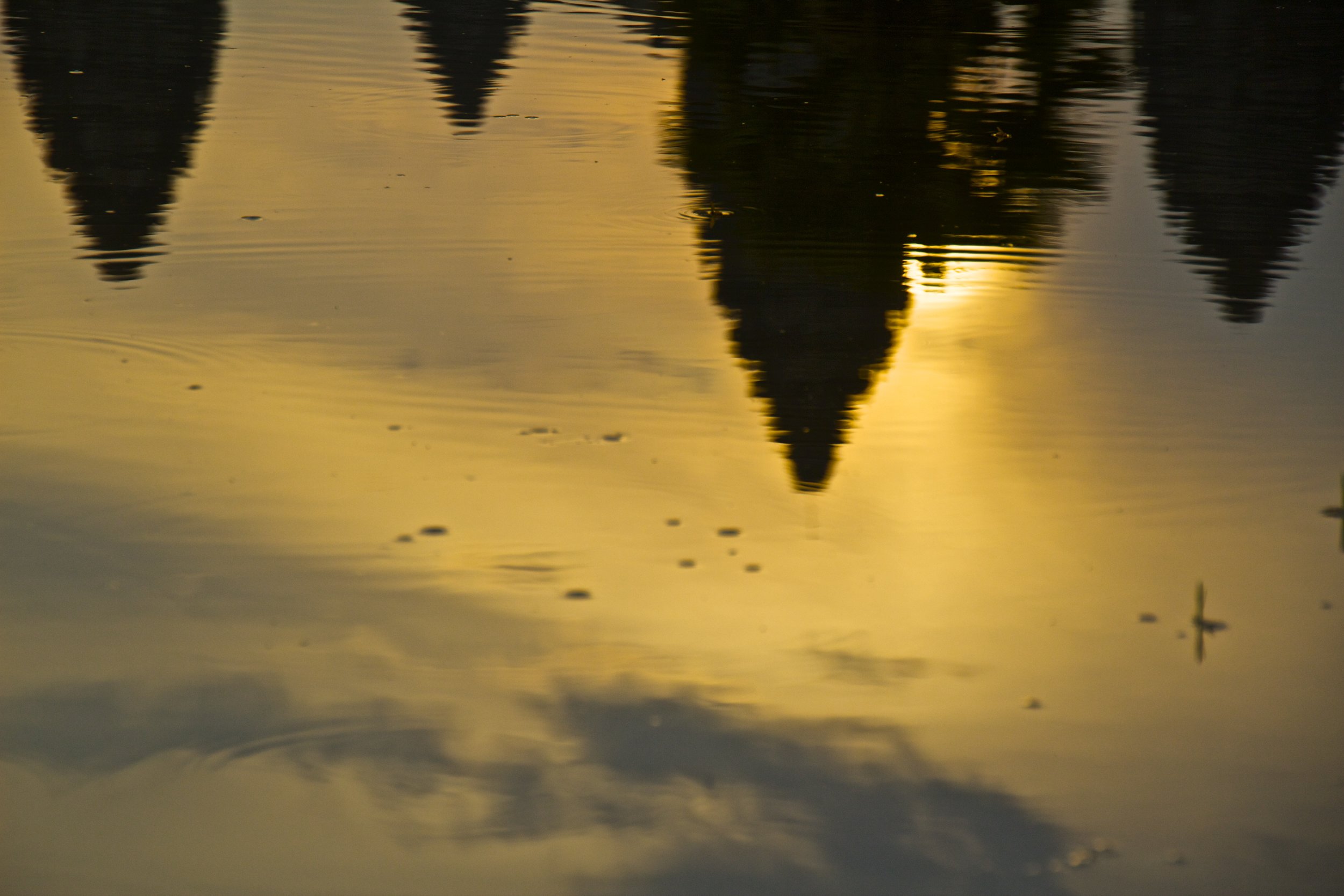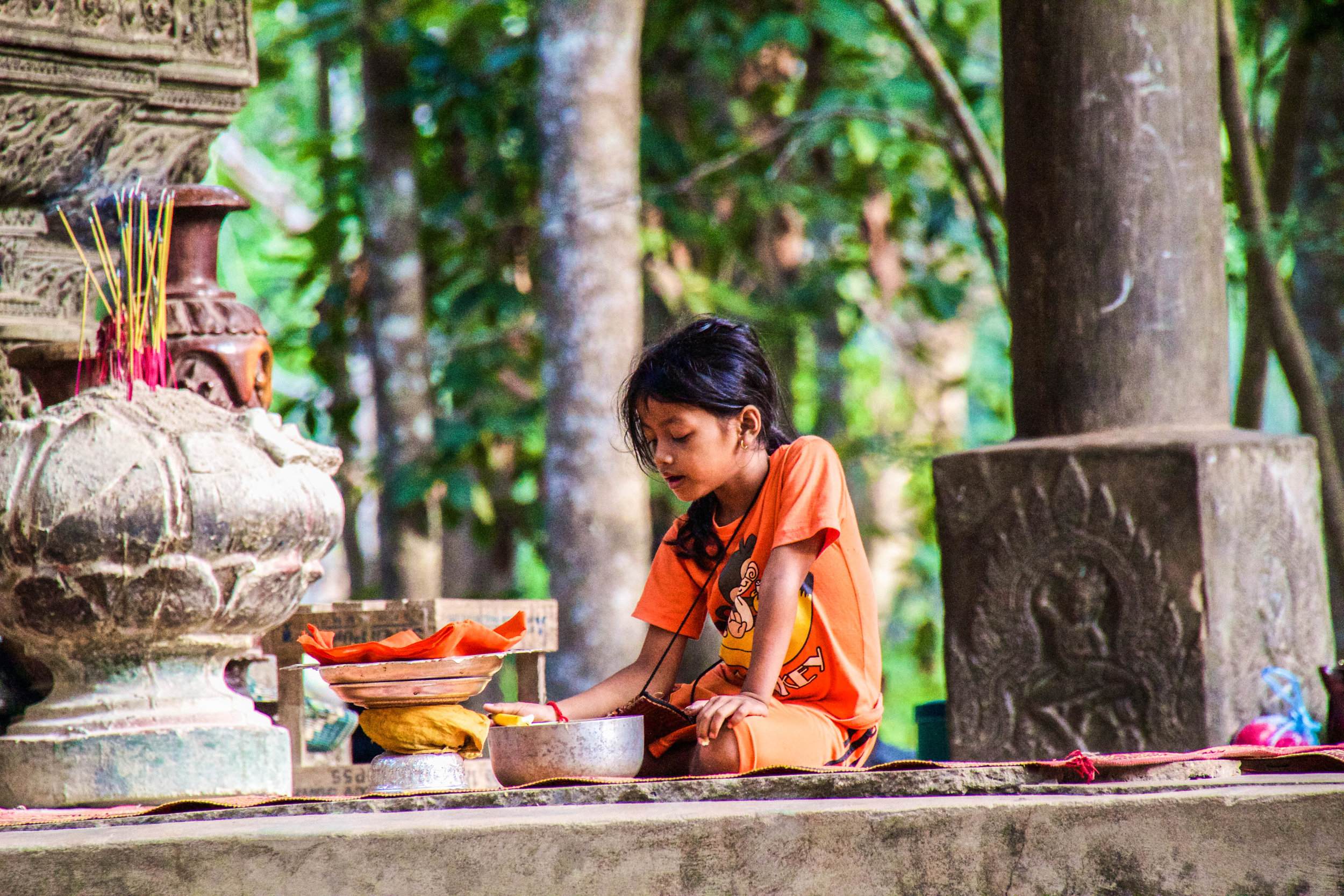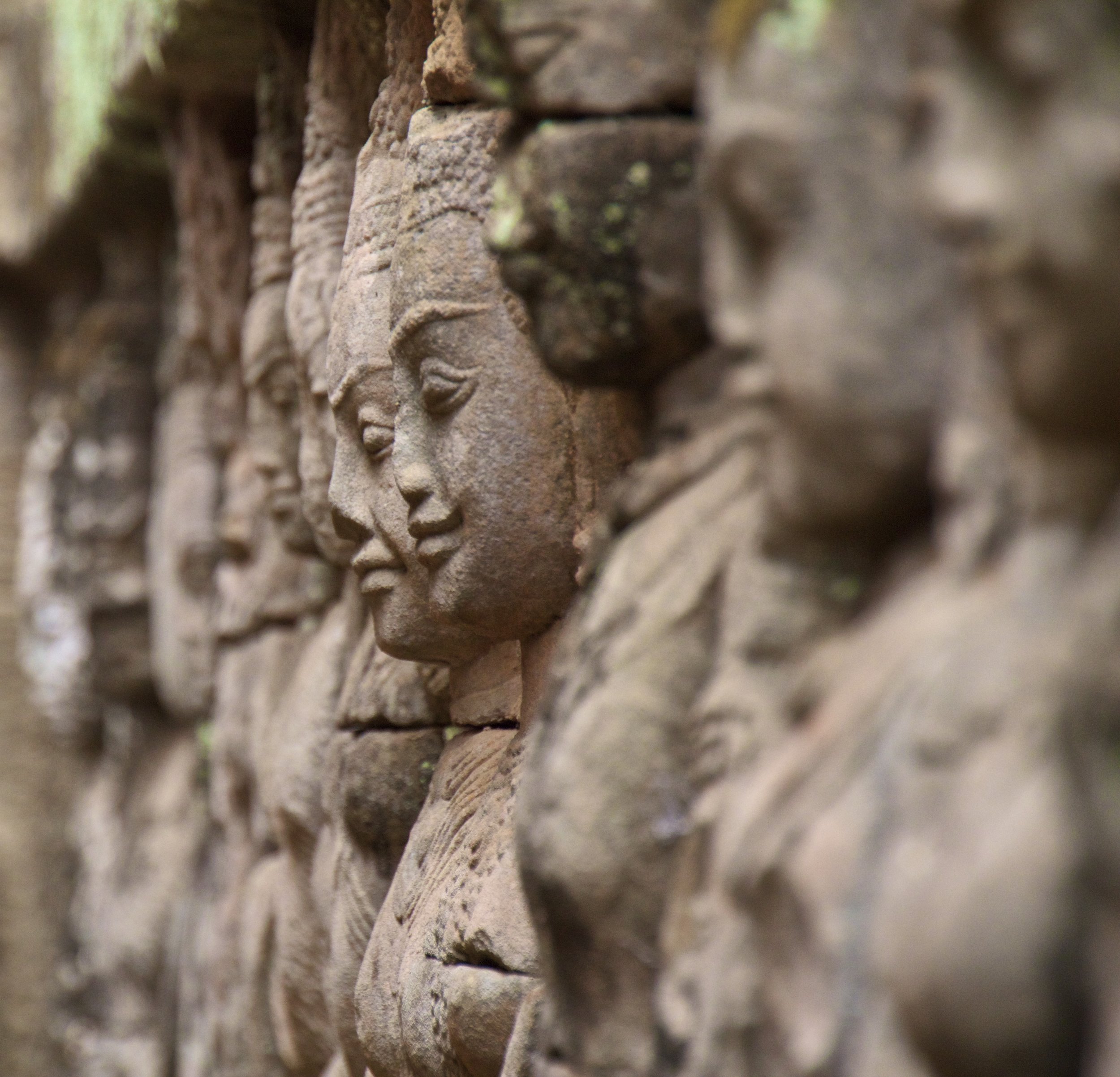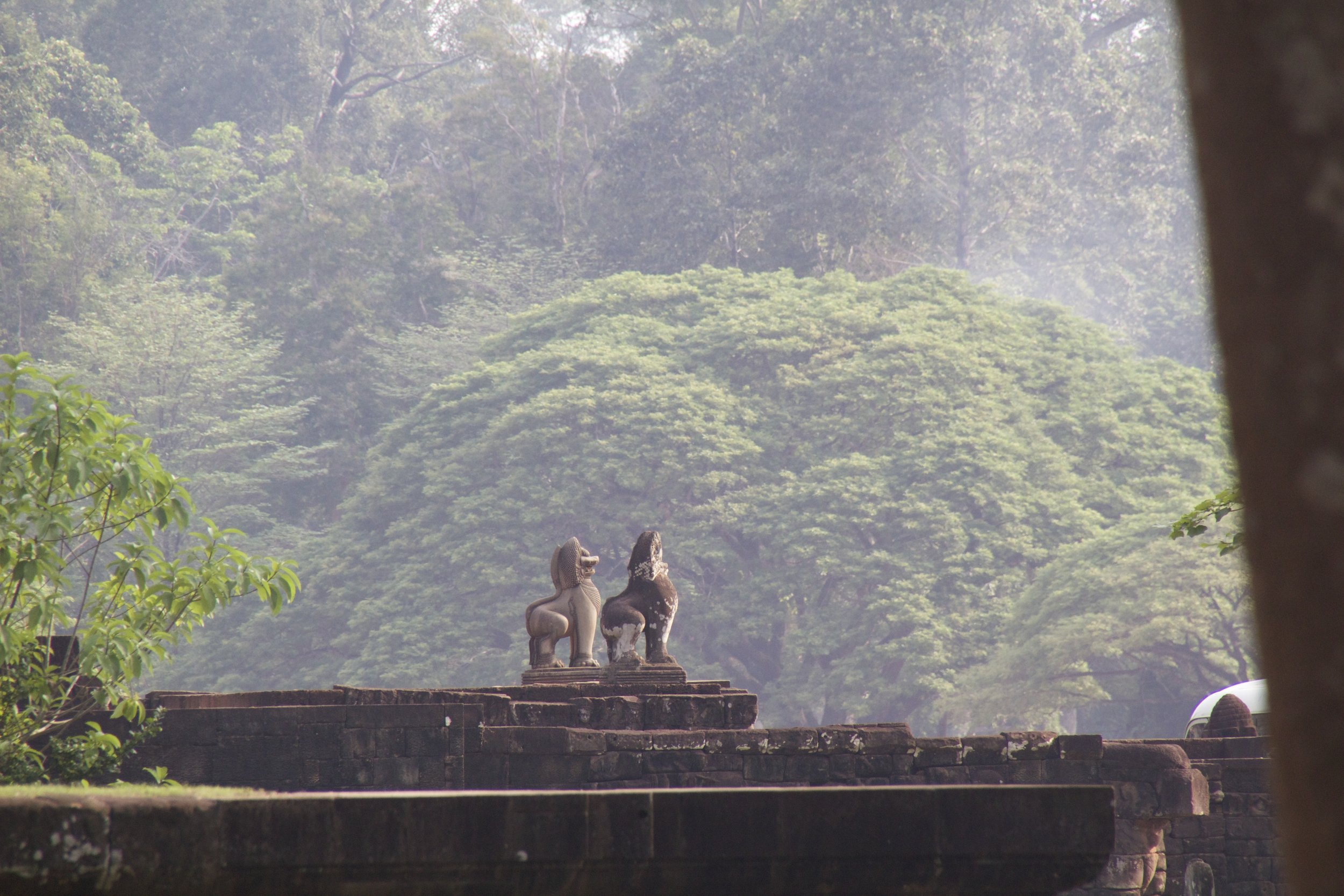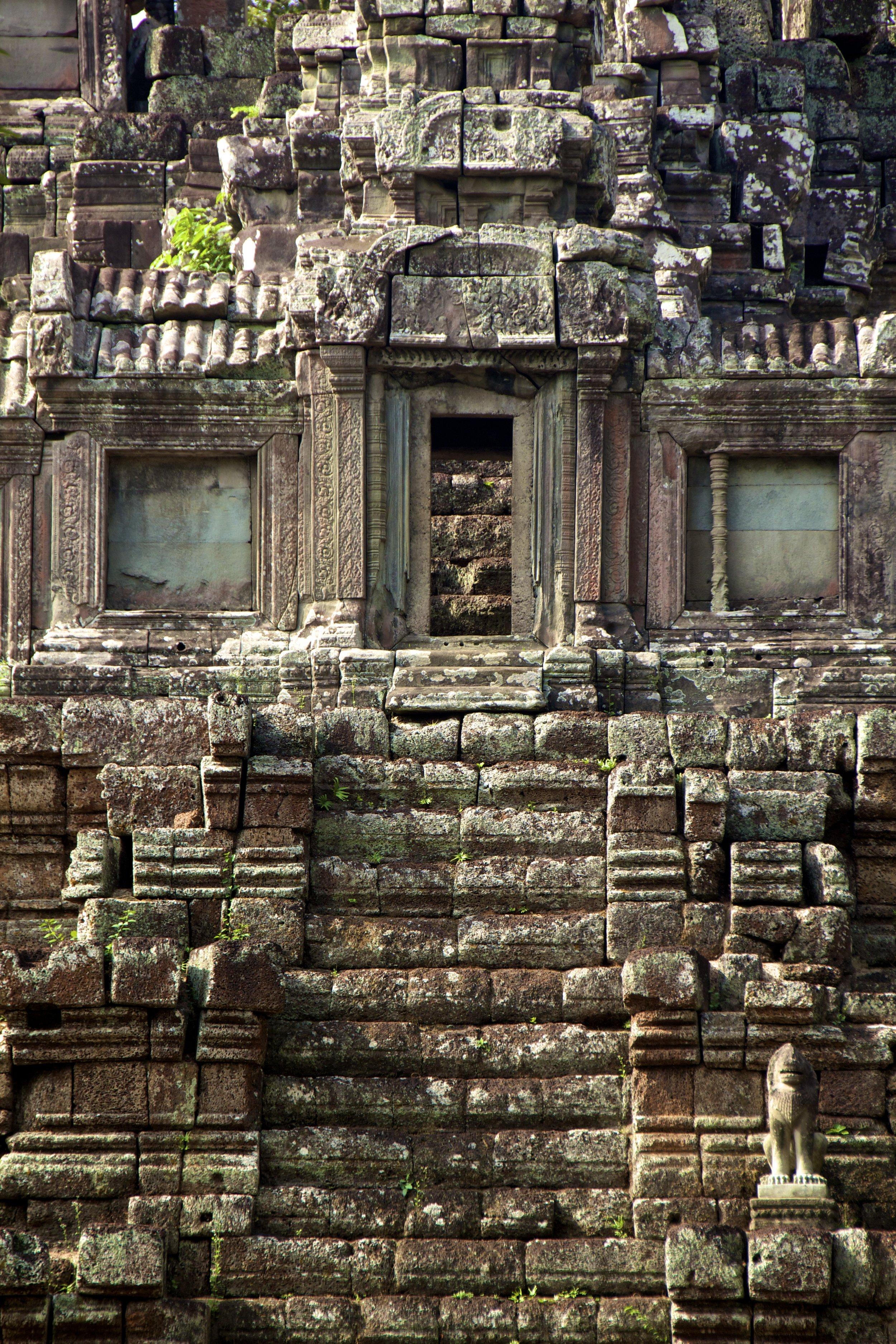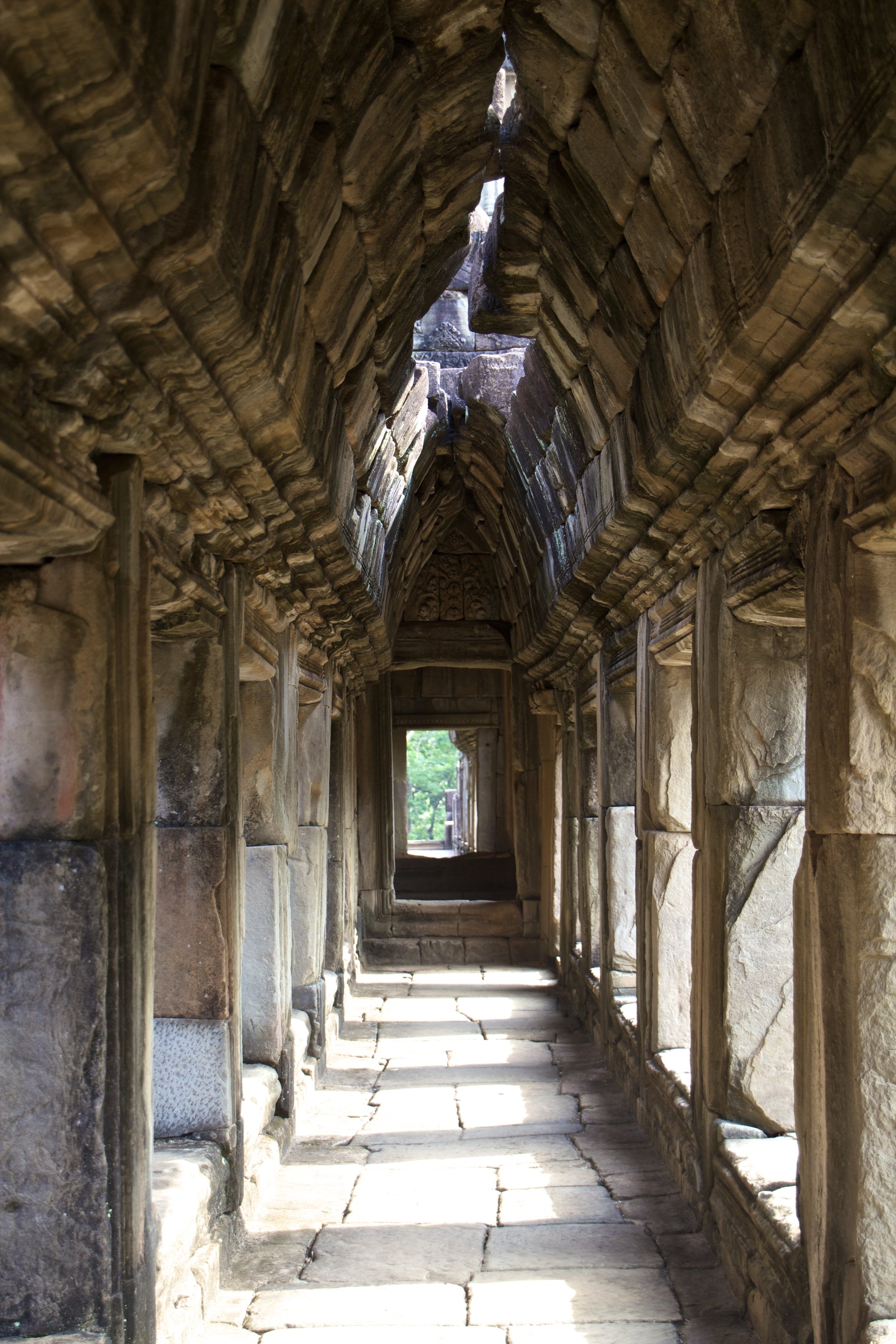Angkor Wat is perhaps, behind the Great Wall of China, the most recognizable landmark in all of East Asia. But despite its fame, is actually one of the smaller members in a much bigger complex of temples. Angkor is an area of about 20 square miles, containing more than 200 temples. Angkor Wat is special amongst these temples because it is perhaps the best preserved. This is thanks in part of the giant moat that surrounds the temple, keeping the jungle from swallowing it back up like so many of the other temples in Angkor. Its preservation is also thanks to the fact that as empires rose and fell around it over the years, it was never completely abandoned.
It was originally built as a Hindu temple early in the 12th century during the Khmer Empire. However, after the fall of the Khmer Empire it eventually switched from being a holy place for Hindus to Buddhists. It was first discovered by European explorers in the 1500s, long after the society and culture that constructed it had vanished, and it has been a source of intrigue ever since – and rightfully so. Every inch of every temple in Angkor is covered in intricate and puzzling carvings, evidence of a society and history more complex than history books will ever be able to reflect. But of all these carvings, one stands out to me as the most mysterious: on the temple wall, clear as day, is what would appear to be a dinosaur – a stegosaurus to be exact. This carving is in a temple called Ta Prohm, which we will get to later. How could they possibly have even known what that was? Your guess is a good as mine.
One thing however is certain, the temples at Angkor have so strongly sparked imaginations for the past 500 years since it’s discovery by Western explorers that its imagery has infiltrated modern mainstream literature and film alike. My favorite example of this is Disney’s The Jungle Book. Walking through the temple ruins my mind immediately jumped to images of the monkey song.
Go back and watch that full scene and I'd be surprised if you don't see the similarities between it and the photos of Angkor that are to follow.
Temple #1: Angkor Wat
It is apparently “the thing to do” to go to Angkor Wat at sunrise. So our hotel arranged a car to bring us to the temple at 5am. The park opens at 5:30am. We had to make a quick stop at the ticket booth where we had our mug shots taken and then printed onto our tickets. Tickets into the National Park are 20 USD per day. You can get a better daily rate if you buy a ticket for a whole week but that seems a little excessive to me. We fought crowds of Japanese tourists, who were traveling for a Japanese holiday called Golden Week, to get to the front of the line.
As the first rays of light lit up the jungle around us we were driving around the moat surrounding Angkor Wat. The most famously taken picture of Angkor Wat is of the sunrise, with the temple’s 3 towers reflected in the small ponds in front of the structure. As such, there were already crowds of Japanese tourist perched, waiting for the perfect photograph. I was annoyed. This is the reason I tend to be cynical about visiting such massive tourist attractions.
With all these people blowing up my spot, I figured that I might as well do a little exploring. I meandered up to the front of the temple and snapped a few pictures. There was a little door not too far away, off to the left of the main staircase to the temple. “Can I just like, go in?” I looked around, shrugged and ventured into the darkness of the temple alone.
I peeked my head through the next door, which seemed to lead to an open-air room. Everything was made of grey stones. Long pillar-lined hallways separated 4 giant, square pits. I ventured in a little further and then I heard footsteps. I turned and saw a monk in a bright orange robe disappear around a corner. I followed him. Eventually I found myself in a grassy area between 2 massive walls. A man sitting in the ruins beckoned me up. He lit incense for me and led me through a traditional Buddhist blessing. Then he asked for a small donation, which I gave him.
Well I’ll skip ahead – It turns out that it is totally fine to go exploring inside Angkor Wat, but I felt pretty bad-ass for the first 30 minutes when I was in their pretty much alone before the riff-raff started to trickle in. I was disappointed that they made everybody do the Buddhist blessing, but I bounced back.
Eventually I wandered around to the side of Angkor Wat to some of the monks’ living quarters. I was the only tourist walking around there so after taking a few pictures of them shaving each other’s heads I felt awkward left. But I did catch a few shots of Samuel L. Jackson’s monk doppelgänger on the way out, so that’s a plus.
As the sun rose higher in the sky it was starting to get HOT. I stood in the shade watching young Cambodian children laughing, yelling and fighting with each other as they rooted through the garbage for food. An older, stern looking Japanese woman in a visor walked over to them and gave them some oranges. It was nice.
After a few hours of exploring we made our way out to our driver for the day to move on to the next temple.
Temple #2: Angkor Thom
This temple is actually 10x the size of Angkor Wat. That's not even a hyperbole. It’s less of a temple and more of an area really. It is surrounded by a moat and a giant wall, which allows only 5 points of entrance: the North, South, West, East and “Victory” Gates. Inside Angkor Thom there are a variety of things going on – multiple temples, pagodas, areas of jungle and a large area of food and souvenir vendors. As we approached the main temple complex our driver pointed out a long, elevated, mossy, stone walkway to us that looked out over a dry field with some oddly placed towers back towards the start of the jungle. “The King used to come here to watch elephants fight,” he told us.
A sweaty 3 hours later we staggered back into his car. It was pushing 100 degrees (Fahrenheit). We decided to shorten our agenda and finish with just one more temple that day. The heat was doing a number on us.
Temple #3: Ta Prohm
a.k.a. the Tomb Raider Temple
Remember the temple from the movie Tomb Raider? This one?
Yeah, this is that.
This temple lacks the signature moat that encircles the first 2 temples we visited. When the French first discovered it (during the colonization period) they made efforts to preserve it, clearing away much of the jungle that had grown up around it. As a result larger trees were able to take root and have grown up through and on this old structure. The temple now lies in ruins, after having been slowly torn apart by these giant, slow-moving, wooden tentacles.
At the end of my lap of this temple came the famous door from the movie. I was irritable, standing in a hot, un-sheltered place in the line that had formed to take pictures of it waiting for 3 Japanese men to finish their photo shoot. Eventually they felt satisfied and I muttered to myself as I snapped a few pictures.
One my way out I snapped one picture that I really like of a small Cambodian girl working in her parent’s food stand. As soon as you exit these temples you are swarmed with women and small children trying to sell you small trinkets. One little girl followed me for at least 50 meters repeating all the English that she knew, which was 1 sentence and counting to 8 over and over again. She was particularly dirty and urchin-esque so I felt pretty bad not buying anything from her.
Overall
I'm usually pretty cynical about the uber-touristy places in the world, but this one was very cool. No amount of crowds of tourists could make it uncool. So if you have the chance you should definitely go.




